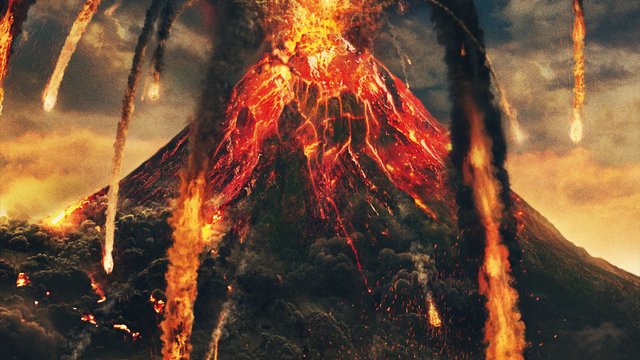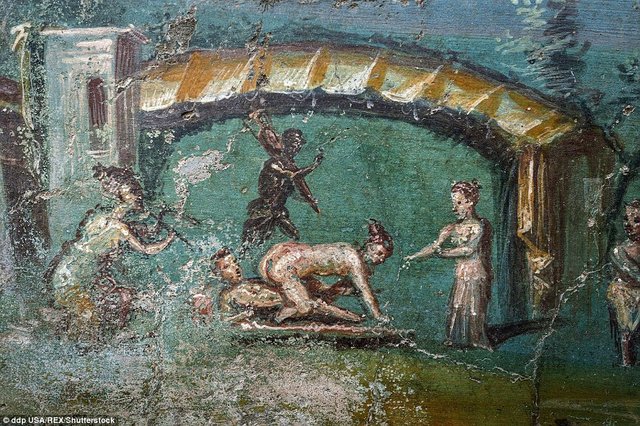Pompeii, digitally reconstructed 2,000 years after its destruction!

Source
Science is god damned amazing. You know this, I know this, Bill Nye the Science Guy knows this.

Bill! Bill! Bill! Bill! Bill!
But sometimes we need reminders about how science can be so amazing. Here's a great example - a five-year effort by researchers from Lund University in Sweden to scan and then digitally recreate an entire city block of Pompeii, in order to show what it might have looked like before Mt. Vesuvius dropped 15 feet of burning hot ash on the joint, just bore fruit. The video is jaw-dropping.
Source
A hot time in the old town tonight
If you managed to pay attention in high school social studies class, or hell even if you caught that one Doctor Who episode, you have some idea of what Pompeii is. Or was, I guess. It's not much now. But before 79 CE, Pompeii was one hell of a town, based on not just this reconstruction but archaeological evidence gathered from there, from the remains of nearby Herculaneum (which was literally wiped off the map in the explosion), and from other Roman ruins dating to the same time period that were spared. There's not as much conjecture and extrapolation as you might think.
That's why the science of archaeology is so fascinating - especially since it continues to develop as new technological approaches are created by enterprising researchers. Let's not forget that Pompeii was pretty much lost to history until the late 16th century; in fact, some of the architectural data the Lund University team used came straight from studies done in the 1800s.
Get it while it's still there

Restored fresco from Pompeii. I don't know what the hell is going on here, but I like it. Source
Of course, being that Pompeii is a 2,000-year-old ruin, one of the reasons behind this new digital reconstruction is that the city's not going to last forever. The impetus for the current study goes back to 1980, when a massive earthquake in southern Italy resulted in some serious architectural damage to the entire region - not to mention a death toll of something like 2,000. Scientists became increasingly concerned about Pompeii's longevity and moved into high gear in their efforts to gather as much data from the city while it still stood. This led to some concerted study of the region.
Once technology caught up to the needs of scientists, things really began to heat up. The new digitization project actually started in 2010, with researchers spending an entire year scanning an entire city district in order to gather the initial data. Then, it took the team from 2011 through 2015 to reconstruct the city block - the centerpiece is depicted in the video. Researchers think it was the residence of a Roman banker based on records and clues that survived the Vesuvius eruption, which is why the finished product is so opulent.
Honestly though, look at that place. I wouldn't have minded living there. Hell, they even had running water, considering how the Roman aqueduct system worked. Sure, you would have had to have lived in the shadow of a giant, angry volcano, but if you saw this place on AirBnB wouldn't you jump at the chance? Only 50 denarii a night!
I didn'tknow anout that. Thanks for sharing.
Pompei is really a great place to visit. I had a chamce to go there anout 10 years ago and I recommend the trip to anyone!
That must have been amazing! You don't happen to have any pictures from your trip, do you? I'm fascinated by the idea. I don't know when I'll be able to get over to Italy, though - sometime in the future I'm hoping!
I have some but I need to dig in some external hard-drive stored somewhere. I don't know whether I could do that quickly in these busy days. But I will try :) (added on the to-do list)